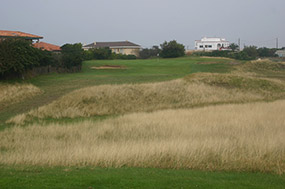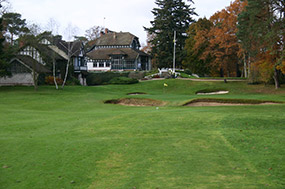Tom Simpson
Profile
An eccentric Englishman who dressed sharply and drove expensive cars, Tom Simpson was one of the most passionate advocates for strategic design and the man who apparently coined the phrase ‘Golden Age’, in reference to golf’s boom years of the 1920s. His passion for design arose from a study of the greens at his home club Woking, near London. So impressed was he with the work of Stuart Paton and John Low, who had redesigned the putting targets, that he decided to forego a promising legal career to instead focus his attentions on the art of golf course creation.
Simpson's start in the business came in partnership with Herbert Fowler, but he quickly established his own practice and worked for a number of outstanding clients, including Ballybunion and County Louth in Ireland, Cruden Bay in Scotland, Royal Porthcawl in Wales, Liphook in England and the Royal Golf Club of Belgium. On each of these projects Simpson was employed essentially to overhaul existing layouts, and there remains some conjecture about the level of his involvement at each club. What can’t be denied is the work he did on new course projects in Europe, particularly France where he designed Hardelot (Les Pins), Chiberta, Fontainebleau and two gems north of Paris named Morfontaine and Chantilly. All 27 holes at Morfontaine are sublime, while the best holes at Chantilly and Fontainebleau are as good as any on the European mainland.
Simpson also added key holes to St Enodoc, Rye, Carnoustie and Muirfield and designed the charming Royal GC des Fagnes course near Spa in Belgium, which, like Chantilly, features some wonderful cross bunkering.
Throughout his career Simpson wrote and drew beautifully on the subject of golf course design. His work was guided by principles that included the desire for courses to demand ‘mental agility’ and for a hole to either ‘be more difficult than it looks or look more difficult than it is’. Further he believed that the centre of the fairway should never be the ideal place to drive your ball, his best courses reflect these views through strategic bunkering and angled greens that generally encourage an approach from one side of the fairway or the other. One of the strangest anecdotes about Simpson was that he had an obituary written about him a full five years before he passed, apparently so he could approve its contents.



















